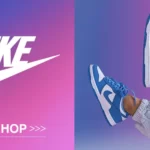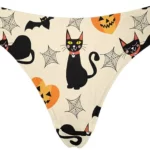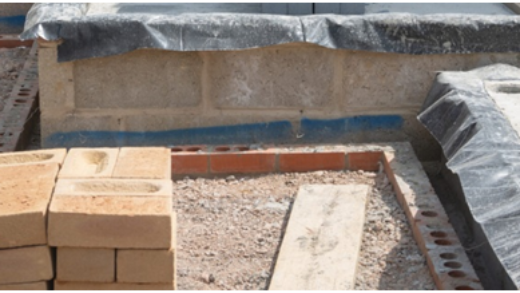In the world of packaging, choices abound, each with its own set of attributes and advantages. Among these, cardboard tube packaging stands tall as a versatile and innovative option. But how does it fare against other packaging types? Let’s embark on a journey of comparison to unravel the distinctive features, benefits, and drawbacks of cardboard tube packaging when pitted against its packaging counterparts.
1. Cardboard Tube Packaging: An Overview
Cardboard tube packaging, often crafted from sturdy and eco-friendly materials, has surged in popularity due to its adaptability and sustainable nature. It offers a trendy cylindrical design for products, providing protection while showcasing a brand’s creativity. The question is, how does it stack up against other packaging alternatives?
2. Versatility of Cardboard Tubes vs. Traditional Boxes
Cardboard Tubes: Beyond Conventional Encasement
Cardboard tubes offer a fresh perspective on packaging versatility. Unlike traditional boxes that limit shape options, tubes present a dynamic canvas for unique designs. Tubes can house a variety of products – from delicate cosmetics to robust posters – while maintaining their structural integrity. Their elongated shape is not only visually distinct but also provides ample space for branding, messaging, and even interactive elements.
Traditional Boxes: Encased in Familiarity
Traditional boxes, while reliable, often adhere to standard rectangular forms. They excel in enclosing items but may lack the visual intrigue and space efficiency of cardboard tubes. Brands seeking a distinctive edge in packaging aesthetics might find that traditional boxes have limitations in design creativity compared to the alluring curves of cardboard tubes.
3. Sustainability Showdown: Cardboard Tubes vs. Plastic Packaging
Cardboard Tubes: Earth-Friendly Elegance
In the era of sustainability, cardboard tube packaging emerges as a champion. Crafted from recyclable and biodegradable materials, cardboard tubes echo environmental consciousness. They provide a powerful platform for brands committed to reducing their carbon footprint. Moreover, these tubes boast a sturdy construction that ensures product protection without harming the planet.
Plastic Packaging: The Conundrum of Convenience
Plastic packaging, although ubiquitous, poses significant environmental challenges. The longevity of plastic in the ecosystem raises concerns about pollution and harm to wildlife. While offering durability and convenience, plastic packaging lacks the eco-friendly charm that cardboard tubes effortlessly exude.
4. Unboxing Experience: Cardboard Tubes vs. Pouches
Cardboard Tubes: A Tactile Journey
Unboxing is an experience in itself, and cardboard tube packaging elevates this journey. The act of removing a product from a tube carries a sense of anticipation and excitement, enhancing the overall customer experience. The tactile engagement of sliding out a product from a cylindrical container adds a touch of luxury, leaving a lasting impression. Cardboard tubes have a space-efficient packaging.
Pouches: Compact Convenience
Pouches, while efficient for certain products, may lack the sensory allure of cardboard tubes. While they excel in portability and space-saving, they may not offer the same unboxing drama that cardboard tubes effortlessly deliver. Pouches often prioritize practicality over the memorable unboxing experience.
5. Branding Brilliance: Cardboard Tubes vs. Shrink Wrap
Cardboard Tubes: Canvas for Creativity
Branding is at the core of packaging, and cardboard tubes excel in this aspect. With their ample surface area, tubes offer an expansive canvas for branding elements, including logos, artwork, and messages. The 360-degree coverage ensures that your brand makes a statement from every angle, forging a powerful connection with customers.
Shrink Wrap: Functional, but Limited
Shrink wrap, while practical for certain products, may fall short in showcasing your brand’s identity. Its transparent nature prioritizes visibility over branding opportunities. Shrink wrap lacks the personalized touch and aesthetic appeal that cardboard tubes effortlessly infuse into the packaging.
6. Durability Duel: Cardboard Tubes vs. Bubble Wrap
Cardboard Tubes: Sturdy Guardians
When it comes to safeguarding products, cardboard tube packaging offers robust protection. Its rigid structure shields items from external impact, making it an excellent choice for fragile or valuable goods. This durability ensures that your products reach customers unscathed and in pristine condition.
Bubble Wrap: Bubbles of Fragile Care
Bubble wrap is renowned for its cushioning prowess, providing a protective layer against shocks and jolts. However, it might lack the structural integrity and brand visibility that cardboard tubes provide. While bubble wrap focuses on protection, cardboard tubes encompass protection and presentation in one elegant package.
7. The Bottom Line: Cardboard Tube Packaging Triumphs
In the realm of packaging options, cardboard tube packaging emerges as a clear victor in several categories. Its versatility, sustainability, unboxing experience, branding potential, and durability collectively position it as a superior choice for brands aiming to make a memorable impact. While other packaging types have their merits, cardboard tube packaging encapsulates a holistic approach that balances aesthetics, functionality, and environmental responsibility.
Elevate Your Brand with Cardboard Tube Packaging
In conclusion, cardboard tube packaging shines brightly as an innovative and superior packaging option. Its ability to seamlessly merge aesthetics, functionality, and sustainability sets it apart from other packaging types. As you embark on your packaging journey, consider the unparalleled advantages that cardboard tube packaging can bring to your brand – a testament to modern ingenuity and a step toward a more environmentally-conscious future.







